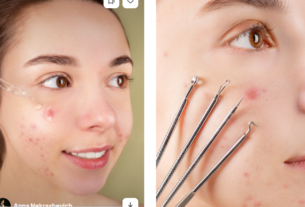There are several ways to measure eye pressure. The most common is using an automated sphygmomanometer, which measures the amount of pressure in your eye socket using auscultation. Other methods include measuring the size of your eyes and using a tonometer to measure how much endurance your eyes have.
The American Academy of Ophthalmology recommends that people with high blood pressure or other medical conditions should have their blood pressure measured regularly and their eye pressure checked as part of their health care.
How is eye pressure measured?
Everyone has different eye pressure, which is why it’s so important to have it measured regularly. Not only can high eye pressure be dangerous, but it can also lead to other conditions like glaucoma. In this blog post, we will teach you how to measure your own eye pressure and give you tips on how to keep it under control. By doing so, you can avoid dangerous conditions and improve your overall health.
One way to measure eye pressure is with a sphygmomanometer. This instrument uses auscultation, or listening to the lungs, to detect the heart rate and blood pressure. The systolic and diastolic pressures are then used to calculate an individual’s average blood pressure. A person is placed in a sitting or standing position with their head slightly inclined forward and timed while they read aloud from a standard test card. The higher the reading on the card, the greater the intraocular pressure (IOP). Auscultation can also be used to measure other health conditions, such as heart arrhythmias or neck pain.
A physician will measure your eye pressure with an automated device that records the pressure in millimeters of mercury (mmHg). The higher the pressure, the more likely you are to experience health problems. A normal reading is between 12 and 18 mmHg.
Normal ranges for eye pressure
The normal range for eye pressure is typically measured using an automated sphygmomanometer. The upper limit of the normal range is typically around 15/10 mmHg, and the lower limit is typically around 8/5 mmHg.
Causes of high blood pressure and eye pressure
There are many causes of high blood pressure and eye pressure. Some of the most common causes are:
* Heart disease: High blood pressure can be caused by heart disease, which is the leading cause of death in the United States. Heart disease can lead to an increase in blood pressure because it affects the way the heart works.
* Atherosclerosis: Atherosclerosis is a build-up of plaque in the arteries that lead to high blood pressure. Plaque is made up of fat, cholesterol, and other substances. Over time, this plaque can narrow the arteries and increase your risk of heart attack or stroke.
* Weight gain: Obesity is a major risk factor for heart disease, stroke, and high blood pressure. Excess weight increases your risk for developing these conditions because it raises your odds of having obesity-related conditions such as hypertension (high blood pressure) and type 2 diabetes.
* Family history: If you have a family history of high blood pressure or any other condition that can lead to hypertension, you’re more likely to develop it yourself.
* Smoking: Smoking Cigarettes continues to be one of the leading preventable causes of death in the United States. Smoking raises your chances not only for developing high blood pressure but also for other serious health conditions such as coronary artery disease (heart disease), lung cancer, and emphysema (breathing difficulties).
How to lower your blood pressure and eye pressure
Blood pressure is measured with a cuff that applies pressure to the upper arm. The higher the blood pressure, the more difficult it is for the blood to flow through the arteries. Eye pressure is also measured with a cuff, but a larger vein in the arm is used. The smaller the vein, the higher the eye pressure.
There are several ways to lower blood pressure:
1) Reduce salt intake. Too much salt can increase blood pressure. Reducing your salt intake can help reduce your blood pressure over time.
2) exercises and stress reduction. Exercise can help reduce blood pressure by increasing heart rate and reducing stress levels.
3) eat fruits and vegetables. Fruits and vegetables are high in potassium, which can lower blood pressure by relaxing muscles and decreasing heart rate.
Blood pressure is measured by taking a reading from the arm after the subject has been sitting or standing for at least 5 minutes. The average person’s blood pressure ranges from 120/80 to 150/90 mmHg. Eye pressure is also measured by taking a reading from the eye with a special device. Normal eye pressure ranges from 30-50 mmHg, but can be as high as 200 mmHg in some cases.
There are many things you can do to lower your blood pressure and eye pressure:
• Eat a balanced diet that includes plenty of fruits, vegetables, and whole grains.
• Exercise regularly. Even just thirty minutes of moderate exercise per day can help lower blood pressure.
• Take prescribed medications if needed. Some medications used to lower blood pressure include angiotensin converting enzyme inhibitors (ACE inhibitors), beta blockers, calcium channel blockers, and angiotensin receptor blockers (ARBs).
• Avoid smoking tobacco products and Limit alcohol consumptionto two drinks per day for women and one drink per day for men.
Visit: How to Get long, thick lashes with Lumigan Eye Drops?



